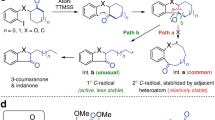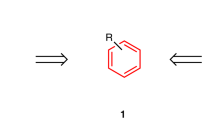Abstract
IT was shown originally by X-ray and electron diffraction, and has been confirmed by other physical and by chemical means, that the most stable and permanent form of the cyclohexane ring is that particular strainless form which is sometimes likened to a chair or a staircase. Geometrically, its chief feature is a six-fold alternating axis of symmetry. Its twelve extracyclic bonds fall into two classes1: six lie parallel to the axis, while six extend radially outward at angles of ± 109.5° to the axis. The stereochemical properties of substituents bound by these two classes of bond are so different that a need has been felt for verbal and symbolic means of distinguishing the classes.
This is a preview of subscription content, access via your institution
Access options
Subscribe to this journal
Receive 51 print issues and online access
$199.00 per year
only $3.90 per issue
Buy this article
- Purchase on Springer Link
- Instant access to full article PDF
Prices may be subject to local taxes which are calculated during checkout
Similar content being viewed by others
References
Kohlrausch, K. W. F., Reitz, A. W., and Stockmair, W., Z. phys. Chem., B, 32, 229 (1936).
Hassel, O., Tidsskr. Kjemi, Bergv. Met., 3, 32 (1943).
Beckett, C. W., Pitzer, K. S., and Spitzer, R., J. Amer. Chem. Soc., 69, 2488 (1947).
Author information
Authors and Affiliations
Rights and permissions
About this article
Cite this article
BARTON, D., HASSEL, O., PITZER, K. et al. Nomenclature of cycloHexane Bonds. Nature 172, 1096–1097 (1953). https://doi.org/10.1038/1721096b0
Issue Date:
DOI: https://doi.org/10.1038/1721096b0
This article is cited by
-
Prelog Centennial: Vladimir Prelog (1906–1998)
Structural Chemistry (2006)
-
Specificity in Chemical and Enzymatic Oxidations of Glucose Anomers
Nature (1955)
-
The steric course of hydrogenation of Δ4 and Δ5 steroids
Experientia (1955)
Comments
By submitting a comment you agree to abide by our Terms and Community Guidelines. If you find something abusive or that does not comply with our terms or guidelines please flag it as inappropriate.



